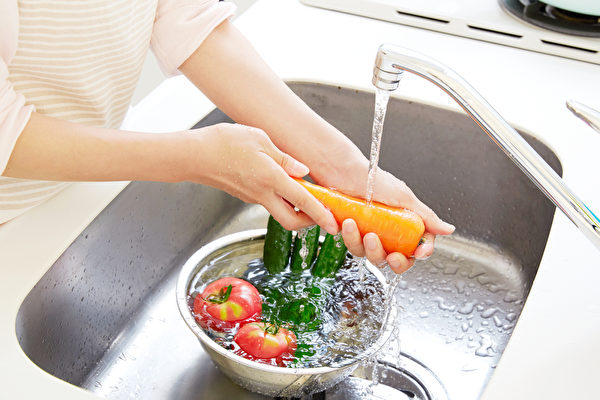Eating fruits and vegetables every day is a good way to maintain health, but it is essential to ensure that they are thoroughly washed before consumption. A new study has found that the simplest way to wash fruits and vegetables is also the best way.
According to CNN, 10% of people fall ill each year due to food safety issues, with approximately 46% of foodborne illness cases attributed to consuming contaminated fruits and vegetables.
In addition to dirt, unwashed produce may harbor various harmful substances, including bacteria, fungi, viruses, and pesticides. Even produce grown in greenhouses may still carry bacteria and pesticides.
Therefore, it is crucial to wash fruits and vegetables before consumption. But how can you effectively clean them?
Start by washing your hands. This helps prevent bacteria on your hands from contaminating the fruits and vegetables you are washing.
The simplest and safest way to clean fresh produce is to hand wash them under running water. Use your hands (or a brush) to gently scrub fruits and vegetables until they appear clean on the surface. Additionally, wash the produce in a clean container and avoid using a sink that may be contaminated with bacteria.
Avoid using detergents or bleach to clean fruits and vegetables, as they can be absorbed by the skin of the produce, altering their taste and posing safety risks.
However, you can use vinegar and baking soda to clean fresh fruits and vegetables, effectively reducing bacteria and pesticide residues on produce.
When using vinegar, you can opt for distilled malt vinegar, apple cider vinegar, or red wine vinegar. Use half a cup of vinegar per cup of water, soak the fruits and vegetables for two to three minutes while stirring occasionally, then rinse with fresh cold water for at least one minute.
For baking soda, simply add 1 teaspoon of baking soda to each cup of cold water, soak the produce in a clean container for 15 minutes, stirring occasionally.
Whether using vinegar or baking soda, insufficient rinsing may affect the taste and texture of fruits and vegetables and even damage their fragile skin.
A study comparing different ways of washing apples found that washing with water directly and soaking in baking soda had almost the same effectiveness in removing pesticides. It is worth noting that most trace pesticides found on fresh produce are not hazardous.
Therefore, based on current evidence, “water” remains the best method for cleaning fresh fruits and vegetables, with no substantial benefits from using vinegar or baking soda.
However, a recent study using apples discovered that pesticides can penetrate deeper than just the skin. Therefore, in addition to washing, it is recommended to peel apples before eating to further reduce potential exposure to residual pesticides.
For fruits and vegetables that are not intended for immediate consumption, it is advisable to pat them dry with paper towels or use a salad spinner to remove excess moisture before storing them in a sealed container in the refrigerator to reduce bacterial growth.
For berries, it is best to wash them right before eating. Also, before refrigerating, be sure to remove any rotten or moldy berries.

